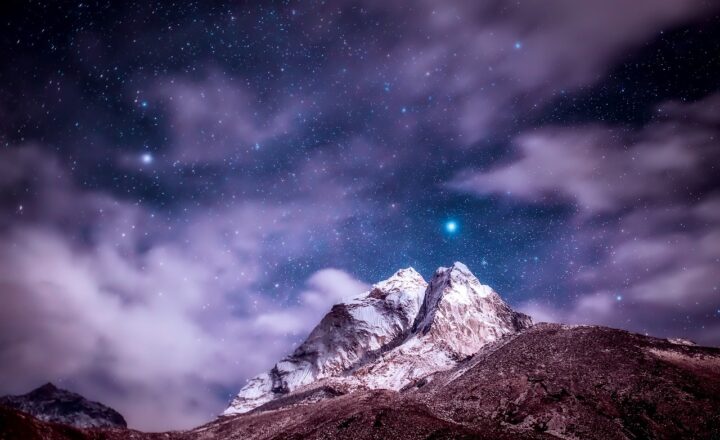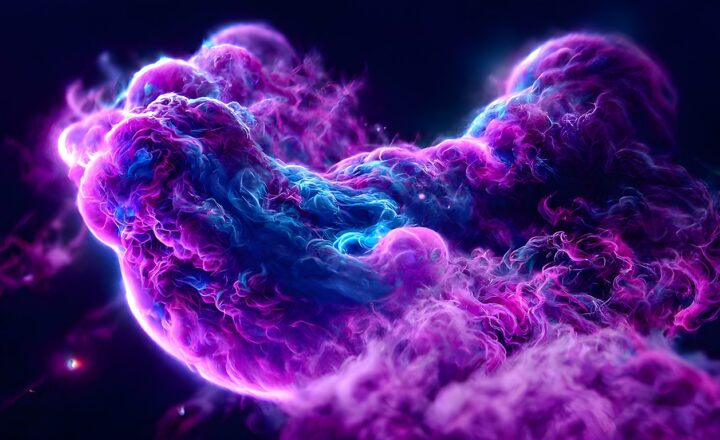From the Big Bang to Present Day: Theories on How the Universe Evolved
November 12, 2024

The universe holds a captivating story, one that dates back approximately 13.8 billion years to a monumental event known as the Big Bang. This primordial explosion is thought to have unleashed an expanding universe teeming with matter, energy, and the raw materials that would eventually evolve into everything we see today. In this article, we will take you on an enlightening journey through time, exploring different theories and models that explain how the universe has evolved, from its fiery inception to the present day.
1. The Big Bang: The Beginning of Everything
The Big Bang theory, backed by robust scientific evidence, suggests that the universe began as an extremely hot and dense singularity, which expanded rapidly. This explosive event not only marks the birth of the universe but also the onset of space and time. The evidence supporting this theory includes:
- Cosmic Microwave Background Radiation (CMB): Discovered in 1965, CMB represents the afterglow of the Big Bang, providing a snapshot of the universe just 380,000 years after this explosive event. Its uniformity and temperature fluctuation across the sky serve as compelling evidence for the Big Bang theory.
- Hubble’s Law: The observation that galaxies are moving away from us in all directions correlates with the expansion of the universe, indicating that the universe has been expanding since its inception. Edwin Hubble’s observations in the 1920s laid the groundwork for this understanding.
- Abundance of Light Elements: The theory of Big Bang Nucleosynthesis suggests that the formation of light elements such as hydrogen, helium, and lithium during the first few minutes of the universe aligns with observational data, further supporting the Big Bang theory.
The Big Bang serves as the starting point of cosmic evolution, leading us to explore what happened in the universe long after this explosive beginning.
2. The Era of Particles and Forces
In the immediate aftermath of the Big Bang, the universe was a chaotic soup of particles. As the universe expanded and cooled, it underwent several critical phases:
- Quark Era: At first, the universe was too hot for quarks to bind together. As it cooled, quarks began to combine to form protons and neutrons, leading us to the formation of the building blocks of matter.
- Hadron Era: This period saw the combination of quarks to form hadrons (protons and neutrons) while the universe was still in a high-energy state. Proton-antiproton pairs annihilated with each other, and neutrons became the predominant baryonic matter as the universe continued to expand and cool down.
- Lepton Era: As the universe cooled further, leptons, such as electrons, became more stable, leading to their dominance in the cosmic environment.
- Nucleosynthesis Era: A few minutes post-Big Bang, the universe cooled sufficiently to allow for nucleosynthesis, where protons and neutrons fused to form the isotopes of helium and hydrogen, giving birth to the first atomic nuclei.
Each of these stages contributed to the eventual formation of the electrons, protons, and neutrons that would create atoms, setting the stage for the universe to fill with matter.
3. The Recombination Era and the Cosmic Dark Ages
As the universe continued to expand and cool, approximately 380,000 years after the Big Bang, it reached temperatures low enough for electrons to combine with protons to form neutral hydrogen atoms—a process known as recombination. This transformation played a key role in the subsequent evolution of the universe:
- Decoupling of Matter and Radiation: After recombination, photons could travel freely through space, leading to a universe filled with radiation. This event marks the end of the optical era, giving way to the Cosmic Microwave Background Radiation (CMB) that we observe today.
- The Cosmic Dark Ages: Following recombination, the universe entered a period dubbed the Cosmic Dark Ages, during which no stars or galaxies existed. This time lasted for about 200 million years, during which the universe expanded and cooled in silence.
During the Cosmic Dark Ages, the stage was being set for the next great leap in cosmic evolution— the formation of stars and galaxies.
4. Cosmic Inflation: The Rapid Expanse
One of the most significant advances in our understanding of the universe’s evolution is the theory of cosmic inflation. Proposed in the 1980s, this theory posits that the universe underwent a brief but severe exponential expansion just fractions of a second after the Big Bang, drastically reshaping its development. Key components include:
- Smoothness of the Universe: Cosmic inflation explains the large-scale uniformity observed in the cosmos today. Without this rapid expansion, material fluctuations would result in greater variations across the universe.
- Formation of Structures: Inflation theory helps to explain how small quantum fluctuations led to the clumping of matter, forming the large-scale structures such as galaxies, galaxy clusters, and superclusters we see today.
Inflation is an essential paradigm for understanding how the universe moved from homogeneity to the complex structure we observe today.
5. The Birth of Stars and Galaxies: The Era of Reionization
After the Cosmic Dark Ages, hydrogen gas began to condense under gravity, giving rise to the first stars. This period, often referred to as the era of reionization, occurred approximately 200 million years after the Big Bang:
- First Star Formation: The first stars, known as Population III stars, were likely massive, hot, and short-lived. Their formation marked the beginning of nucleosynthesis in stars, producing heavier elements that enriched the interstellar medium.
- Reionization Phase: The light produced by these early stars ionized surrounding hydrogen gas, leading to the reionization of the universe, making it more transparent to radiation.
- Galaxy Formation: Over time, these stars grouped together to form galaxies. Their gravitational pull swarmed matter, creating larger constructs such as galaxy clusters.
The reionization era signifies a monumental phase in cosmic evolution—one in which stars, galaxies, and eventually more complex structures emerged.
6. The Evolution of the Universe: Expanding and Accelerating
As we entered the present epoch, the universe continued to expand. In the late 1990s, scientists discovered that this expansion is not only ongoing but also accelerating due to a mysterious force called dark energy:
- The Mystery of Dark Energy: Making up nearly 68% of the universe, the nature of dark energy remains elusive. Its discovery revolutionized our understanding of the universe by suggesting it has properties that contribute to the acceleration of cosmic expansion.
- Large Scale Structure and Cosmic Web: The universe today is composed of vast cosmic structures arranged in webs light years across, with clusters and superclusters of galaxies tied together by vast filaments of dark matter.
- Galactic Evolution: Over the billions of years, galaxies have continued to evolve through processes like mergers and interactions, leading to the rich diversity we see in the universe today.
Understanding these aspects of cosmic evolution represents a profound journey from the fireball of the Big Bang to our present-day universe, characterized by galaxies, stars, planets, and the ongoing drive for scientific discovery.
Conclusion: The Continuing Journey of Cosmic Evolution
From its explosive inception to the vast, complex universe we inhabit today, the evolution of the cosmos is a testament to the wonders of science and human curiosity. This journey through time continues as researchers and astronomers uncover the mysteries held in the fabric of space-time.
As we move forward, the continued exploration of dark matter, dark energy, and the ultimate fate of the universe are just some of the exciting frontiers awaiting future exploration. The quest to understand where we come from and where we are headed remains one of humanity’s most profound inquiries, intrinsically linking us to the cosmos and guiding us on our shared journey through time and space.








